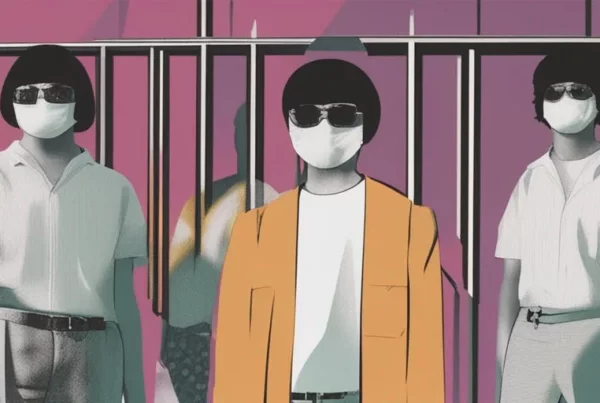
Welcome to this week’s newsletter. Today we’ll discuss an idea I had about the fascinating world of the metaverse! The metaverse concept has been around for a while, but it has gained popularity in recent years as the potential for virtual reality and other immersive technologies have grown. A “metaverse” is a virtual world that exists within a computer network and allows users to interact with one another as well as with virtual objects and environments. It is a space that has grown in popularity for socialisation, entertainment, and business, and it provides a variety of features and capabilities that improve the user experience.
The metaverse was all the rage at its peak, with companies and individuals alike rushing to get involved and explore the potential of this virtual world. In fact, Facebook changed its name to Meta to emphasise the creation of the metaverse. Unfortunately, the hype surrounding the metaverse has waned in recent years as other trends and technologies have emerged. Nonetheless, the metaverse remains an exciting and innovative concept with limitless potential, and it is likely to evolve and grow in the coming years.
The concept of time travel.
I was wondering if there was any way to enhance the immersive and exciting metaverse experience. Enter the concept of a metaverse time-travelling feature. Imagine being able to explore the metaverse’s past and see how it has evolved over time or being able to witness significant events or milestones as they occurred. In the metaverse, people now host music concerts, art shows, and even weddings. There was a wedding held by an Indian couple in a metaverse about a year ago. The possibilities are limitless, and the concept of a time-travelling metaverse adds a new level of complexity and depth to the virtual world. Imagine being able to travel back in time and witness the events firsthand. In this article, we’ll look at the potential applications and challenges of such a feature, as well as the ethical and social considerations that would need to be considered. So come along with us on this journey through time and the metaverse to find out what the future holds!
Before we go any further, you might wonder why we even need a time travel feature in the metaverse. And I say to you, why not? After all, technological evolution is all about exploring new and exciting possibilities, and the time-traveling feature certainly fits that bill. The time-travel feature has the potential to open up a whole new world of possibilities for the metaverse and the broader virtual reality industry. It could lead to the development of new data capture and storage technologies, as well as advances in virtual reality and other related technologies. The time-travel feature may also inspire new and innovative ways of using the metaverse for socialisation, entertainment, and business, resulting in a more engaging and immersive user experience.
Potential uses for the time-traveling feature
Within the metaverse, there are numerous applications for a time-travel feature. I just wanted to share a few ideas that my average-sized brain could garner.
- One of the most important potential applications is the ability for users to witness important events or milestones as they occur. This could include things like the launch of a new virtual world, a friend’s or family member’s wedding, or the introduction of a new feature or technology. By allowing users to travel back in time and experience these events as they occurred, the metaverse could provide a unique and immersive way for users to learn about and understand the specific event, as well as the entire virtual world.
- A time-travelling feature could be used to explore the history of the metaverse and see how it has evolved over time. The metaverse is still in its infancy. Assume that 100 years from now, people in the future want to understand the culture of the metaverse in its early stages. Users could go back in time and see how various events or actions affected the metaverse, allowing them to better understand the cause and effect relationships within the virtual world. This could be a useful tool for education and research, allowing educators and researchers to study history and understand how various events and actions have shaped the metaverse over time.
- A time-travel feature could also be used to gain a better understanding of the metaverse’s community and culture. Users can learn more about the people who have contributed to the development of the virtual world as well as the cultural norms and values that have shaped it by exploring its past. This could give users a different perspective on the metaverse and help them better understand and appreciate the community that exists within it.
- However, time travel’s most important potential application is that it is extremely fun. Time travel has long been a popular theme in popular culture, with numerous films and television shows exploring the concept of travelling through time to witness past or future events. For decades, time travel has been a staple of science fiction, from classic franchises like Back to the Future and Doctor Who to more recent releases like Avengers: Endgame and The Flash. While time travel in the real world is not yet possible, it could be a lot of fun for science fiction and pop culture fans to experience it in the metaverse. Imagine being able to travel back in time and witness significant events unfolding in real-time, or even interact with other users who were present at the time. This is the pipe dream of every nerd, and I’m no exception.
Communication that transcends time.
One of the most exciting potential uses of the time-travelling feature in the metaverse is the ability for users to interact with the past in a meaningful way. One way this could be achieved is by allowing users to communicate with other users who were present in the past. By travelling back in time, users could potentially interact with other users who were present at that time, allowing them to learn more about the community and culture of the metaverse during that period. This could include having conversations with other users, asking questions, or simply observing the interactions of others. Another way users could interact with the past in a meaningful way is by participating in events or activities that occurred in the past. This could include attending concerts or festivals, participating in virtual sporting events, or simply exploring the virtual world as it existed in the past.
Gaming.
The potential for the time-travelling feature in a metaverse to be used for entertainment or gaming purposes is vast and could provide users with a unique and engaging way to experience the past and interact with the metaverse. One way this could be achieved is through the creation of puzzles or challenges that require users to travel through time in order to solve them. These types of puzzles could take many forms, such as finding hidden objects or completing tasks in a specific order, with the added twist of having to travel through different time periods in order to complete them. These types of puzzles could provide a unique and engaging way for users to explore the past and interact with the metaverse, while also providing a sense of challenge and accomplishment.
Entertainment.
The time-travelling feature could also be used for entertainment or gaming purposes in other ways. For example, it could be used to create virtual reality experiences that allow users to witness or participate in significant historical events or milestones, such as the signing of the Declaration of Independence or the first moon landing. It could also be used to create interactive experiences that allow users to explore different time periods and learn about their history and culture, such as visiting ancient civilizations or exploring the future of the metaverse.
The challenges.
While the concept of a time-travel feature within the metaverse is certainly exciting, there are also a number of technological challenges that would need to be overcome in order to make it a reality.
Capturing and storing massive amounts of data would be one of the most difficult technological challenges of implementing the time-travel feature in the metaverse. The metaverse would need to store massive amounts of data about the virtual world and its history in order to provide users with a realistic and immersive experience of the past. This would include information about the metaverse’s virtual environments, characters, and objects, as well as information about user interactions and activities. Storing and managing this data would necessitate significant amounts of storage space and processing power, and it could also pose data security and privacy challenges.
Another technological challenge of implementing time travel in the metaverse is the processing power required to handle the data. To allow users to navigate the past in a smooth and realistic manner, the metaverse must have the processing power to handle the massive amounts of data required to recreate the virtual world and its history. This would necessitate significant technological advances, such as improvements in hardware and software, as well as the development of new algorithms and techniques for data processing and rendering.
We may even require technologies that have yet to be invented. Some technological advances may be required to make the feature a reality. Here are a few examples.
- Improved data storage and management: Advances in data storage and management technologies may be required to store and manage the massive amounts of data required to recreate the past in the metaverse. This could involve making new data storage technologies, like faster and cheaper ways to store data, as well as new algorithms for managing data.
- Advances in virtual reality: Advances in virtual reality and related technologies may be required to provide users with a realistic and immersive experience of the past in the metaverse. This could include the creation of new hardware, such as improved VR headsets and other devices, as well as new software and algorithms for rendering and displaying data in an accurate manner.
Conclusion.
I’d like to end this article on a high note. The time travel feature, which allows users to travel back in time and witness significant events or milestones as they occurred, could be a novel and engaging way for users to explore the metaverse. It’s great fun. However, implementing this feature poses a number of difficulties. To make the feature a reality, significant advances in technology and infrastructure will be required, as well as careful rules and management to protect the privacy and safety of all users. While the possibility of a time-travelling feature within the metaverse may appear to be a distant dream at the moment, it is not out of the question. With continued technological advancement, this feature could become a reality in the future. As a result, the metaverse’s future with a time-travelling feature is bright and full of exciting possibilities.



